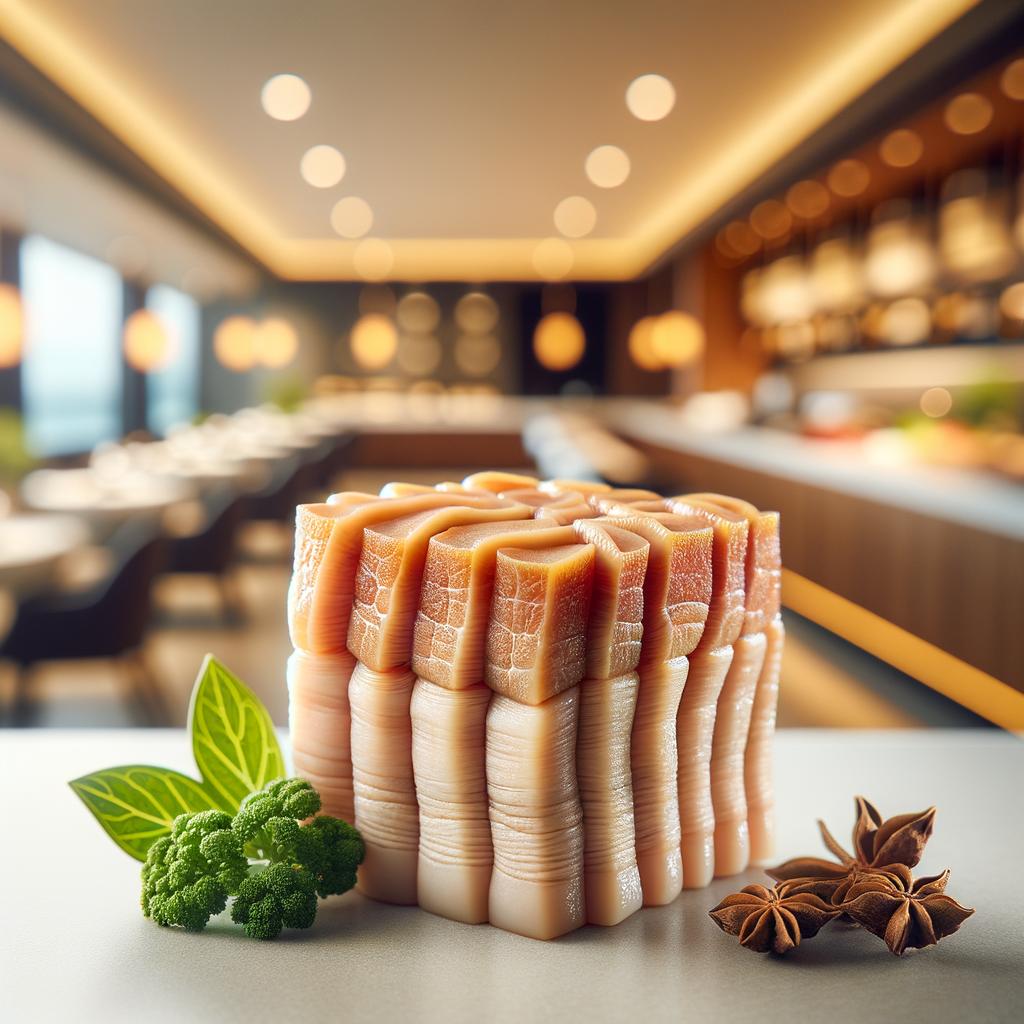Pork Tripe

Description
Pork tripe is the edible lining of the pig's stomach, a culinary delight that is often overlooked in many cultures. It has a unique, slightly rubbery texture that softens beautifully when cooked long and slow. The appearance of pork tripe is quite distinctive, with a honeycomb pattern that is both pleasing to the eye and intriguing to the palate. Its flavor profile is relatively mild, but it has an uncanny ability to absorb the flavors of the ingredients it is cooked with, making it a versatile ingredient in a variety of dishes. What sets pork tripe apart from similar ingredients is its texture and the rich, gelatinous quality it imparts to dishes when cooked properly.
Primary Uses
Pork tripe is commonly used in a variety of cuisines worldwide. In Chinese cuisine, it is often used in soups and stews, while in Italian cooking, it is a key component of the traditional dish "Trippa alla Romana". In the Philippines, it's a vital ingredient in the beloved dish "Kare-Kare", a peanut-based stew. Beyond its culinary uses, pork tripe also has a cultural significance in many societies, often being associated with hearty, comfort food and traditional home cooking.
History
The history of pork tripe is as rich and varied as the dishes it graces. It has been a staple in peasant cooking since ancient times, due to its affordability and accessibility. The Romans were known to have consumed it, and it has been a part of Chinese cuisine for over two thousand years. Its use and popularity have evolved over time, with many modern chefs now rediscovering and championing its unique qualities. One interesting folklore associated with pork tripe is the belief in some cultures that eating it can bring good luck, due to its association with abundance and prosperity.
Nutritional Information
Pork tripe is not only delicious but also nutritious. It is a good source of protein and contains a variety of essential vitamins and minerals, including Vitamin B12, zinc, and selenium. It is also rich in collagen, which is beneficial for skin health. However, like many organ meats, it is high in cholesterol, so it should be consumed in moderation. Compared to other types of tripe, such as beef or sheep, pork tripe tends to be slightly higher in fat, but it also has a more delicate flavor and softer texture.

